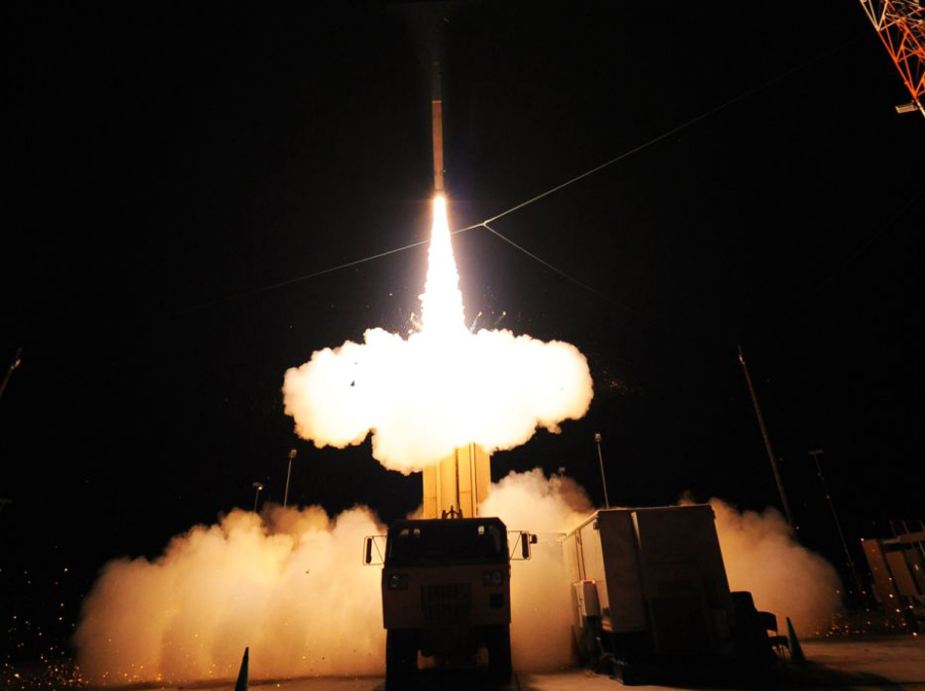On 13 February, the Chinese ministry of Defense claimed a mid-course ground-based missile interception test within its own territory had been successfully achieved on 5 February. Interestingly, on the same day, India test fired its short-range nuclear-capable Agni-1 ballistic missile.

Launch of an HQ-19 missile (Picture source: Chinese MoD)
The Chinese test of interception technology was conducted within China’s territory (without any further detail) and achieved the “preset goal”, China’s Ministry of National Defense said. The test is defensive and does not target any country, China’s state-run Xinhua news agency reported. Many believe China was testing its SC-19 missile, not excluding it could be the HQ-19, the somewhat equivalent to the US THAAD. Both the HQ-19 and the THAAD intercept missiles during their terminal phase rather than during their midcourse phase.
The SC-19 is a derivative of the HQ-19 that combines portions of the latter missile with the significantly larger rocket motor from the Kaituozhe-1 space launch vehicle. The confusion between HQ-19 and SC-19 tests points to a larger question of whether China is actually testing a ground-based ballistic-missile defense system or rather an antisatellite (ASAT) weapon.
The SC-19 was most famously used as the payload booster in 2007 when Beijing destroyed a weather satellite in orbit, sparking an international firestorm over the resulting space debris. Since then the system has repeatedly been tested for what China claims is ballistic-missile defense purposes. For instance, China is believed to have used the SC-19 during missile-defense tests in 2010 and 2013.
The 5 February 2018 test comes amid months of international tension over North Korea’s nuclear weapons and missiles programme, and Beijing’s firm opposition to the deployment of US interceptor missiles, the Terminal High Altitude Area Defense (THAAD). China apprehends that the powerful radars of the THAAD missiles can monitor the movement of its missiles in the country and look deep into Chinese territory, which threatens its own security.
China has been ramping up research into all sorts of missiles, from those which can destroy satellites in space to advanced nuclear-tipped ballistic missiles, as part of an ambitious modernization scheme overseen by President Xi Jinping.
China first tested a ground-based mid-course missile interception in 2010. A second test was conducted in 2013. China says such technology is needed for its own national defense and security. China and Russia have also held simulated anti-missile drills in 2017. The SC-19 is only useful against medium-range ballistic missiles. Under the terms of the Intermediate-Range Nuclear Forces (INF) Treaty, neither the United States nor Russia is supposed to field ground-based medium-range missiles, although Washington accuses Moscow of currently being in violation of the INF.
The assumption the 5 February test involved an SC-19 leads many to conclude that the recent antiballistic-missile test wasn’t done with the United States in mind, but rather regional nations. The SC-19 has countries like India and North Korea in mind, while one Chinese military analyst suggested it could be deployed opposite of Taiwan. The SC-19 is designed to intercept medium-range ballistic missiles, and Washington does not deploy those in the Asia-Pacific. However, Frank Rose, then the assistant Secretary of State for arms control, verification and compliance, stated that “The continued development and testing of destructive ASAT systems is both destabilizing and threatens the long-term security and sustainability of the outer space environment.”
Interestingly, the announcement by China comes on a day when India successfully test-fired its short-range nuclear-capable ballistic missile Agni-1 with a strike range of over 700 km from a test range off the Odisha coast.Weighing around 12 tonnes, the 15-metre-long Agni-1 can carry payloads up to 1,000 kg and is capable of hitting a target beyond 700 km.














